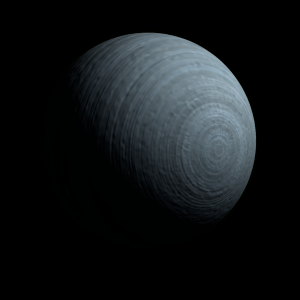|
|
Space Astro
|
Info for exoplanet "Lassamos'lyke"
| Scientific (actual) data |
|---|
| Name | OGLE-2016-BLG-1067L b |
| Planet status | Confirmed |
| Planet mass | 0.43 |
| Semi major axis | 1.7 |
| Discovered | 2018 |
| Updated | 2018-02-21 |
| Publication | Published in a refereed paper |
| Detection type | Microlensing |
| Alternate names | MOA-2016-BLG-339 b |
| Star name | OGLE-2016-BLG-1067L |
| Right ascension | 273.2° |
| Declination | -27.01° |
| Star distance | 3730 |
| Star mass | 0.3 |
| Star sp type | M |
| Star alternate names | MOA-2016-BLG-339 |
| Wikipedia article | OGLE-2016-BLG-1067L b |
Back
| |
| Fictional info (?) |
|---|
| Suggested name | Lassamos'lyke |
| Planet type | Cold gas giant |
| The volume of water ice in the south polar ice cap, if melted, would be sufficient to cover the entire planetary surface to a depth of 8 meters.
A prominent result is the "great red spot", a giant storm that is known to have existed for centuries since it was first seen by telescope. |
| Atmosphere | Sulfur dioxide | 33% |
| Argon | 31% |
| Xenon | 18% |
| 2H2O | 15% |
| Hydrogen chloride | 1.6% |
| Atmospheric pressure | 0.0014 bar |
 |
| No known satellites |
| Google search for Lassamos'lyke |
|
Website by Joachim Michaelis
|
|
|
|